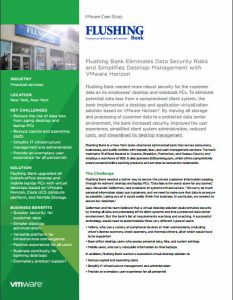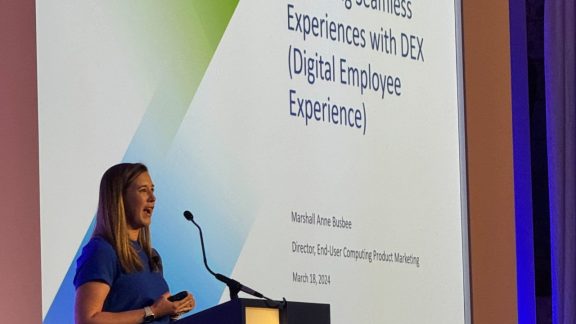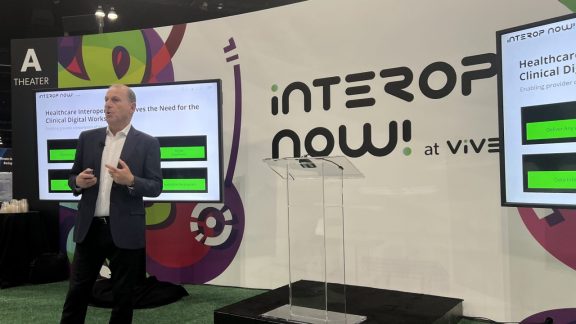
As many banks face tighter IT budgets, building a virtual desktop infrastructure (VDI) is a cost-saving alternative to adding hundreds of new desktops. For New York-based Flushing Bank, though, the move to VDI wasn’t just about doing more on less budget. VDI was their best bet to strengthen security, according to a new article at Windows IT Pro.
 “Data loss is the worst scare for any banker,” Alexander Gellerman recently said in a VMware case study, Flushing Bank’s vice president of systems infrastructure. “We carry so much personal information about our customers, and we need to make sure that data is as secure as possible. Losing any of it could easily finish the business. In particular, we needed to secure our desktops.”
“Data loss is the worst scare for any banker,” Alexander Gellerman recently said in a VMware case study, Flushing Bank’s vice president of systems infrastructure. “We carry so much personal information about our customers, and we need to make sure that data is as secure as possible. Losing any of it could easily finish the business. In particular, we needed to secure our desktops.”
Flushing Bank chose VMware Horizon to provide a consistently great user experience to employees across regional branches—tellers with scanners and printers, back-office desktop users and mobile workers on laptops. The Bank moved customer data to a primary data center providing virtual desktops for 150 concurrent users, and a secondary data center provides 150 floating desktops.
[Related: Changes Ahead in Financial Services … and VMware Is Ready for Any]
Moving customer data to a protected data center environment has eliminated the security risks of storing data on desktops and laptops at bank branches. Plus, the two new data centers provide better business continuity and disaster recovery.
In addition to better security, VMware Horizon has simplified desktop administration for Flushing Bank’s IT organization. “It makes our work way more pleasing than it used to be because everything is centrally managed,” Gellerman said. “It’s almost automatic.”
[Related: Bank IT Leaders Reveal 4 Reasons Why They Are Driving Change]
Ultimately, Flushing Bank’s move to a VDI environment was a huge step in the right direction, but it wasn’t without challenges. Insufficient storage IOPS, end-user resistance—find out how Flushing Bank dealt with these classic VDI challenges at Windows IT Pro.








